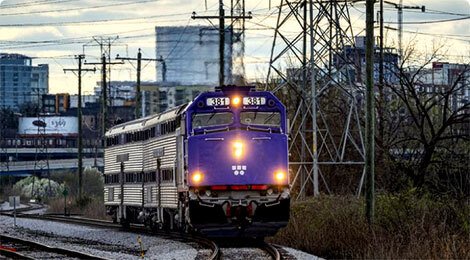By Tera Ashley, Director of Food Access
In parts one and two of this blog series, we looked at the meaning of the term “food desert” and explored how limited availability, variety and affordability of food in low-income, low-access communities creates misconceptions about the demand for fresh, quality produce. Catch up here.
In part two of this series, a study was referenced in which it was found that survey respondents without vehicles were only 40% as likely to consume fresh fruits and vegetables as car-owning respondents. While one could assume that the respondents who did not use their own cars to purchase fresh fruits and vegetables perhaps lived in rural areas without a public transportation system in place, it may be just as likely that they lived in an urban area in which the public transportation system simply did not meet their needs.
D. Weatherspoon’s 2014 article, “Fresh vegetable demand behavior in an urban food desert,” sheds light on Detroit’s public transit conundrum: “Detroit’s inadequate public transportation system exacerbates its food access problems — a light rail train covers only the immediate downtown area, and a limited number of bus routes link the centre to the more affluent suburban food oases. Each shopping trip provides an inconvenience to the consumer, as it requires walking to and from a bus stop, transferring, and carrying bags.”
Missed opportunities to increase food accessibility within a public transportation system are not just confined to Detroit, as seen in “Barriers to Food Security and Community Stress in an Urban Food Desert,” an assessment by Jessica Crowe and her colleagues of a South Dallas food desert. Crowe found that bus routes – which served as the dominant available public transportation — were “either local and did not go to a large grocery store or led to a transit center in which one had to make several transfers to arrive at a large grocery store or supermarket.” Residents in this South Dallas community who rode the bus to visit larger grocery stores had a travel time of between two and three hours one way, despite some grocery stores averaging twenty minutes away by car. To combat long bus rides to the supermarket, residents who are able often turn to family members or friends with cars, or expensive ride-sharing services, such as Uber or Lyft.
A focus on efficiency and reliability is key when considering improvements to a public bus system. Efficiency in the form of direct routes (without transfers) may not only decrease a consumer’s travel time to a supermarket, but may also allow them the freedom to purchase refrigerated items. Additional buses can ensure more frequent run times, thus increasing reliability if one bus is late or encounters difficulties, as well as potentially decreasing a rider’s wait time at a stop. An increased number of buses can correlate positively with food accessibility, as seen in Deokrye Baek’s study entitled, “The Effect of Public Transportation Accessibility on Food Insecurity,” which found that “one additional bus-equivalent vehicle per 10,000 people decreases the probability of food insecurity of households by 1.6 percentage points.” So if public transportation improvements such as direct routes and additional buses would lead to improved food accessibility, why are cities not implementing these measures?
For decades, it would seem, cities have focused their efforts on increasing public transportation ridership by targeting wealthier individuals – such as commuters – in attempts to decrease congestion and/or improve the environment, rather than meeting the needs of LILA residents, as echoed in Elnaz Yousefzadeh Barri’s article entitled, “Can transit investments in low-income neighbourhoods increase transit use? Exploring the nexus of income, car-ownership, and transit accessibility in Toronto.”
““Many socioeconomically disadvantaged communities, home to transit-dependent populations, were largely overlooked during the transit planning process of the post-war era. The rationale being that investing in low-income neighborhoods, where transit ridership is already very high, would be less likely to result in mode-shifting, congestion relief, and environmental benefits.””
However, not centering public transportation on meeting the needs of the residents who would most utilize the service can create an inefficient system that results in both decreased ridership and increased food inaccessibility. This can perpetuate an already complicated problem: cities may confuse decreased ridership with decreased need and, with less income generated from ticket sales, may be wary of spending money to improve a public service that is already losing funds.
Public transportation improvements – such as direct bus routes to supermarkets – have the ability to increase ridership, and not just among those without vehicles. According to a Toronto study, improvements to public transportation not only resulted in increased ridership amongst those without cars, but also amongst low-income households with one or more cars per adult. In fact, the most elastic relationship with public transportation use seems to not rest with wealthy individuals, but instead with low-income car owners. When a city focuses on the food accessibility needs of its most vulnerable residents when designing public transportation, its ridership increases, resulting in greater economic benefit through increased ridership as well as a higher chance that its environmental and congestion goals will be achieved.




